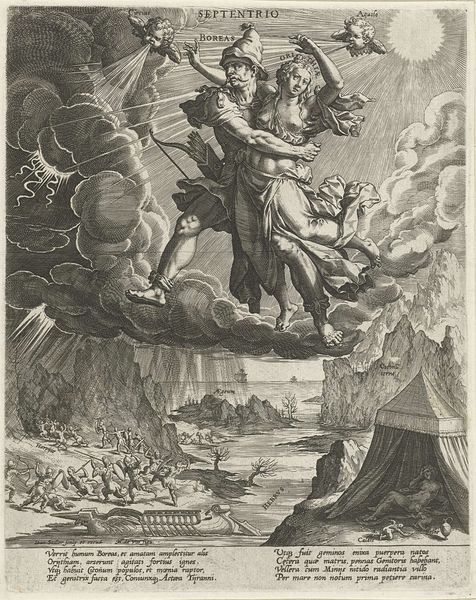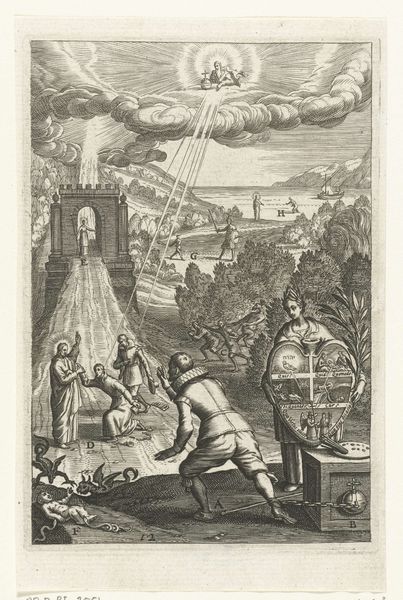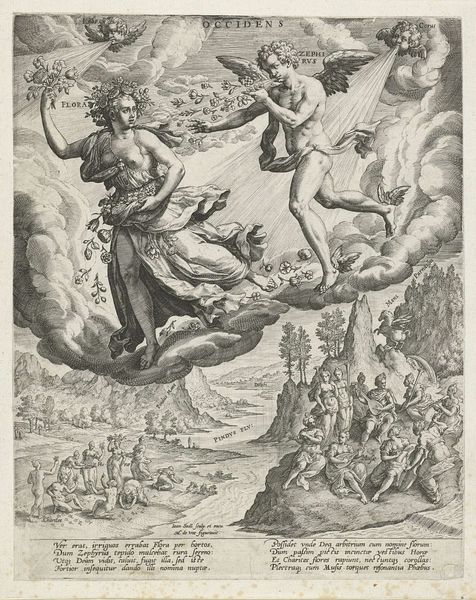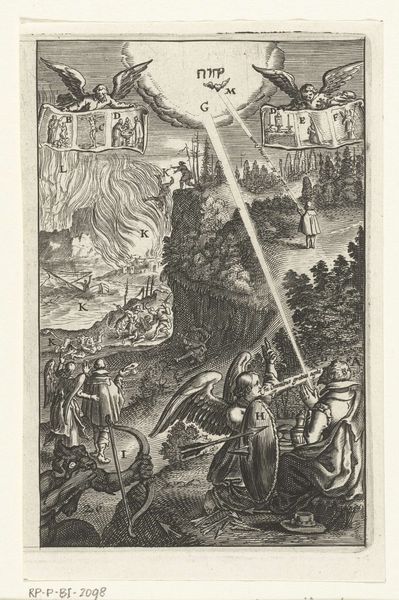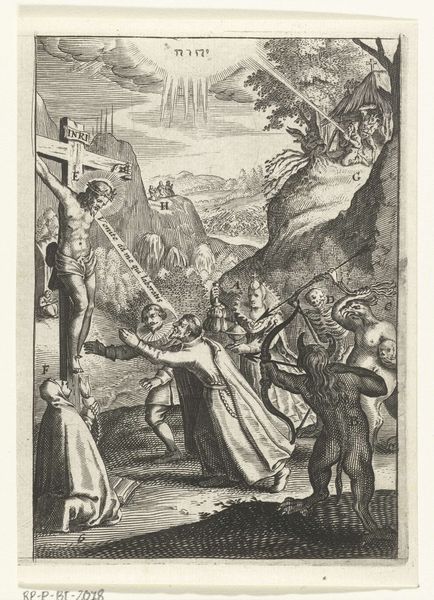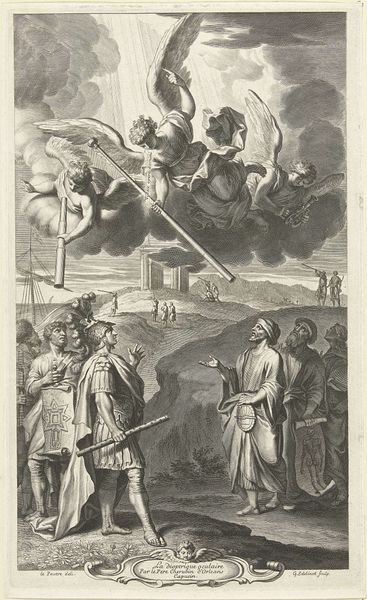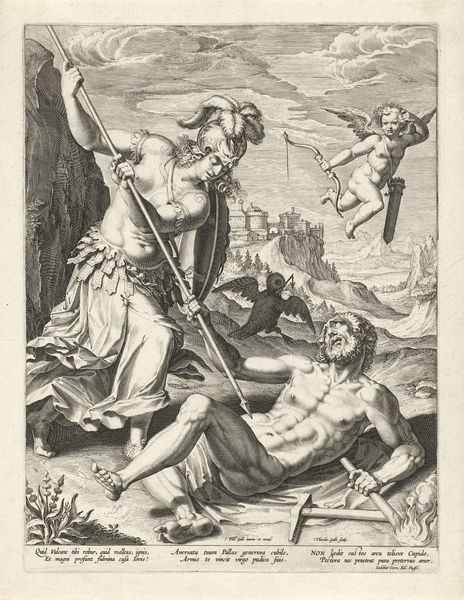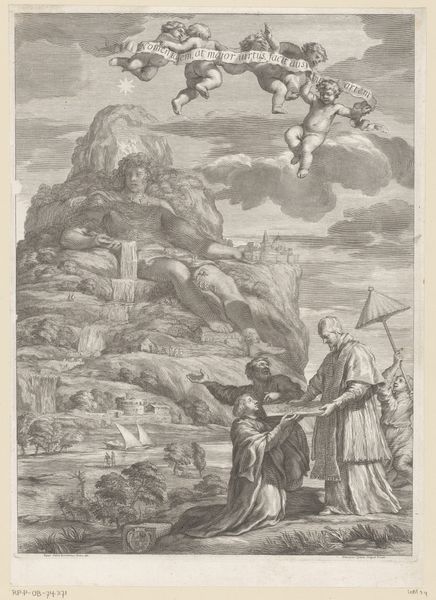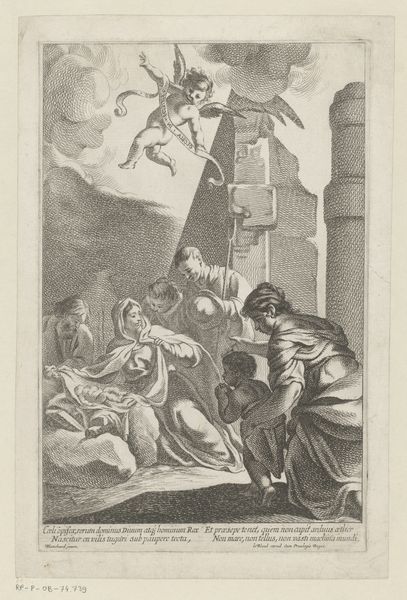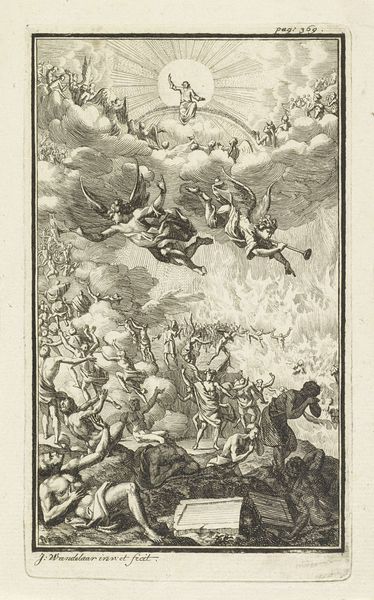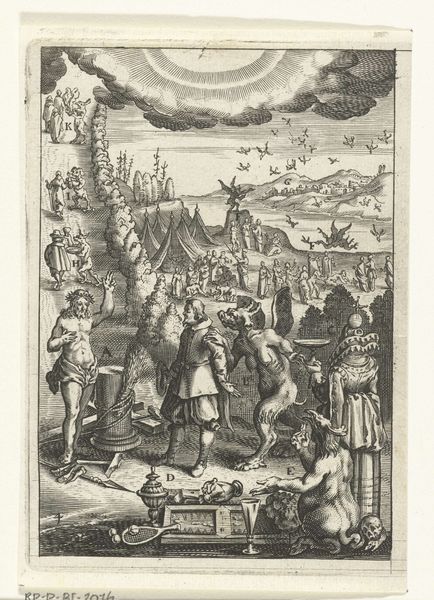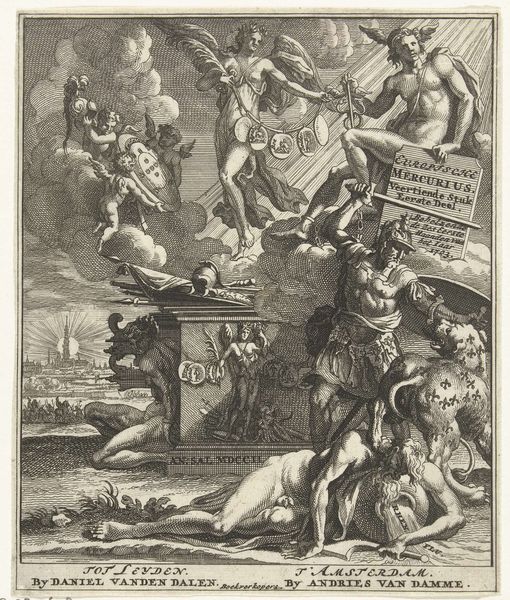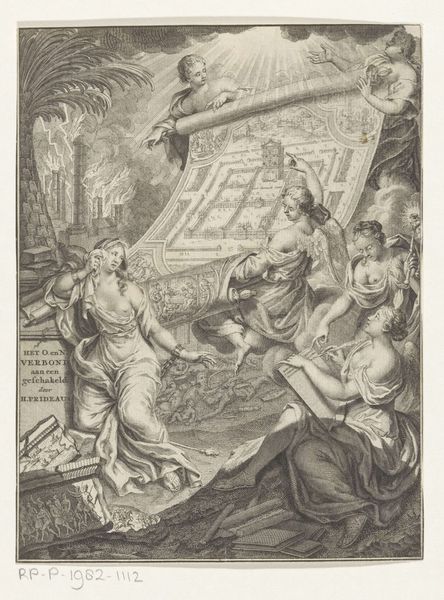
print, engraving
#
allegory
# print
#
pen sketch
#
old engraving style
#
landscape
#
figuration
#
northern-renaissance
#
nude
#
engraving
Dimensions: height 252 mm, width 202 mm
Copyright: Rijks Museum: Open Domain
Curator: Here we have an engraving titled "Zuidenwind," attributed to Johann Sadeler I, likely created sometime between 1560 and 1600. It’s currently held in the Rijksmuseum collection. Editor: My first impression? This image pulses with a strange duality—order versus chaos, earthly groundedness opposed to soaring allegory. The figures are strikingly posed. Curator: Indeed. Sadeler and his contemporaries were deeply influenced by the Northern Renaissance's engagement with classical allegory and the renewed interest in figuration. You can really see how these prints were distributed as accessible forms of knowledge. Editor: Absolutely. Take, for instance, the figure on the left, draped and crowned, carrying farming implements. She certainly embodies "Ops," the Roman goddess of plenty and harvest, very visually connected to abundance. Note her heavy skirt! The zodiac is visually important. Curator: From a historical perspective, prints such as these circulated widely. It is really hard for modern eyes to understand what an explosive technology they represented and the new types of symbolic understanding that they conveyed. I suspect that these kinds of artworks are associated with trade as well as cultural exchange and helped to cement understandings of climate, navigation, and geography in the early modern era. Editor: Then there is her counterpart – Auster, the south wind, seemingly unconstrained, almost wild with the blowing hair as the wind exits from the windbag he is holding. Notice how one leads to a sort of pastoral heaven above fertile and dynamic earth. Whereas the other is related to a sort of hell, as if rising out of primordial rock? Curator: The visual vocabulary here is dense and would have spoken volumes to contemporary viewers schooled in classical learning. Today it really has faded from collective use but, in some ways, many themes remain in common use, though mediated through advertisement and design. I wonder, will contemporary iconography of the logo or the avatar survive in the same way? Editor: A thought-provoking question! Thinking about it now, my mind is buzzing with all the possible interpretations and recontextualizations. Curator: Mine as well. It’s fascinating to think about how images shape both past and present sensibilities.
Comments
No comments
Be the first to comment and join the conversation on the ultimate creative platform.
